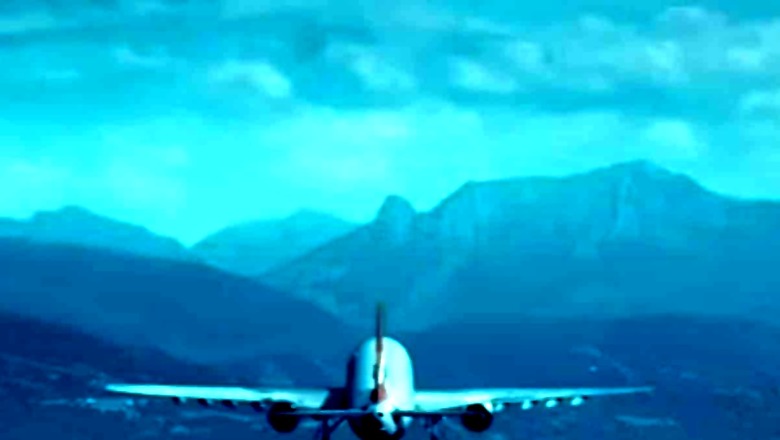
views
The multi-starrer Netflix series IC 814: The Kandahar Hijack, which relives the 1999 hijacking of an Indian Airlines flight by terrorists, has created a buzz around the country and reignited conversations about the incident from about 25 years ago. Now, an edited excerpt from former top cop D Sivanandhan’s upcoming book Brahmastra published in The Indian Express has revealed astounding details of how Mumbai Police cracked the hijacking case.
On December 24, 1999, five masked men hijacked the aircraft — IC 814 — 40 minutes after it took off from the Tribhuvan International Airport in Kathmandu, bound for New Delhi. The hijackers forced the captain of the flight — Devi Sharan — to fly the plane into Pakistani airspace, where he did not receive clearance to land. The plane then landed in Amritsar, with barely 10 minutes’ worth of fuel left.
After refuelling the plane, the hijackers forced the pilot to fly the plane to Lahore, where the pilot made a desperate landing despite not getting permission from Pakistan’s ATC, which turned off all lights and navigational aids at the airport.
But at the last moment, they were given permission and it was here that they refuelled and made their way to Dubai. After being denied permission, the flight landed at the Al Minhad Air Base in the UAE. The hijackers released 27 of the 176 passengers on board, including the body of 25-year-old Rupin Katyal, who had been fatally stabbed by the captors.
After this, the plane finally landed in the hijackers’ original destination, Taliban-controlled Afghanistan’s Kandahar airport. It was here that the hijackers negotiated with the then Atal Bihari Vajpayee government, which eventually ended on December 30 with the release of all the hostages for three terrorists — Ahmed Omar Saeed Sheikh, Masood Azhar, and Mushtaq Ahmed Zargar.
According to Sivanandhan, 26/11 hero Hemant Karkare, who was posted at the time in the Mumbai office of the Research and Analysis Wing, informed him the day after the hijacking, December 25, that RAW had procured a phone number which was in Mumbai and in constant touch with a number in Pakistan. He handed the phone number to Sivanandhan, who at the time was joint commissioner of Mumbai Police and head of the elite crime branch.
Following several days of painstaking investigation, Sivanandhan and his men had a breakthrough when the Mumbai-based caller called his handler in Pakistan and told him that he was running low on cash and needed money urgently. The caller on the other end told him to wait for 30 minutes, he would make arrangements and call back.
The surveillance team tapped the next call when a Jaish-e-Mohammed (JeM) terrorist informed his colleague in Mumbai that they had managed to arrange Rs 1 lakh which would be delivered by a hawala transaction. The person in Mumbai was instructed to go to the Shalimar Hotel situated at Mohammed Ali Road in south Mumbai at around 10 pm to collect the money. He was further told that a man dressed in blue jeans and a striped shirt would meet him at the hotel and hand over the money.
Crime branch officers dressed in plain clothes went to the hotel, spotted the person who took the money and followed him back to a chawl in the Basheerbagh slums of Jogeshwari. After plainclothes sleuths kept vigil for two days, a team of highly trained commandos of Mumbai Police and senior officials of the crime branch stormed the room, with Sivanandhan overseeing the operation.
A total of five terrorists were arrested. A huge cache of arms and ammunition including two AK-56 assault rifles, five hand grenades, Anti-Tank TNT rocket launchers, shells, three detonators and explosives, six pistols, a huge stock of ammunition and Rs 1,72,000 in cash were recovered from the room. It was as if the terrorists had planned to conduct a major terror attack in Mumbai. A map of Matoshree was also recovered from the room. Matoshree was the residence of late Shiv Sena chief Balasaheb Thackeray. It continues to be Shiv Sena (UBT) chief Uddhav Balasaheb Thackeray’s residence even today.
Simultaneous raids were also conducted at two other places, in Jogeshwari and Malad. In one of the raids, a flat rented by a Nepali couple was raided and live hand grenades, 2-3 Glock pistols and USD 10,000 in cash were recovered.
Upon interrogation, the terrorists confessed to the entire hijacking and how they were part of it. They also revealed that three other Pakistani nationals were staying with them in the same room in Jogeshwari. These three had gone out during the raid and were not arrested. Despite Mumbai Police’s efforts, they managed to flee.
During sustained interrogation, it was revealed that the entire team, including the hijackers, had been holed up in Mumbai since July 1999 and were preparing for the hijack. The hijackers were identified as Ibrahim Athar from Bahawalpur, Pakistan; Shahid Akhtar from Karachi, Pakistan; Sunny Ahmed Qazi from Karachi, Pakistan; Mistri Zahoor Ibrahim from Karachi, Pakistan; Shakir from Sindh, Pakistan.
Finding the real names and identities of the hijackers, who were in Kandahar, Afghanistan was a major breakthrough. Till then, the hijackers were unknown to the world and had hidden their identities and faces by wearing monkey caps inside the aeroplane. It was the Mumbai Police who were the first to reveal the true identities and real names of the hijackers to the world. Karkare, who was giving a minute-to-minute update of all the developments in Mumbai to his superiors in Delhi, instantly relayed the names and identities of the hijackers to his bosses, who in turn briefed the then deputy prime minister of India, LK Advani. After this information was passed on, the Government of India and the world came to know about the true identities of the hijackers.
















Comments
0 comment